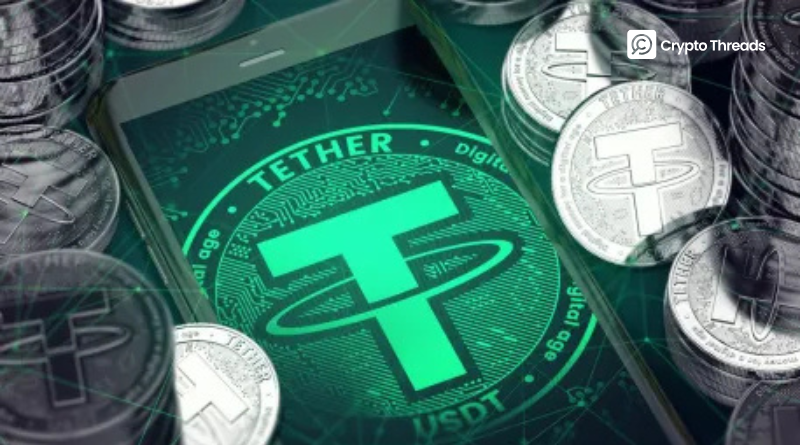Tether’s Enforcement Power Under Fire: CBDC Parallels in Focus
Key Takeaways
- Tether froze $85,877 in stolen USDT in cooperation with law enforcement
- The company has frozen over $2.5 billion USDT related to illegal activities across 2,090+ wallets
- Critics argue frequent law enforcement cooperation makes stablecoins similar to CBDCs
- Centralized control allows quick response to hacks and legal pressure but raises decentralization concerns
Following a recent freeze of nearly $86,000 in stolen USDT, Tether’s enforcement capabilities are once again under scrutiny—sparking renewed debate over the level of centralized control embedded in stablecoin systems.
The world’s largest stablecoin issuer announced on Sunday that it had frozen $85,877 in USDT associated with stolen funds. The action was taken in cooperation with law enforcement, reflecting Tether’s growing role in on-chain compliance.
CBDC central bank digital currency
Though modest in dollar value, the freeze adds to Tether’s extensive track record of intervention. To date, the company reports freezing over $2.5 billion worth of USDT and blocking access to more than 2,090 wallets suspected of involvement in illegal activities.
Stablecoins: A Powerful Enforcement Tool
Unlike decentralized cryptocurrencies like Bitcoin or Ethereum—which operate without a central authority and cannot reverse transactions—stablecoins issued by centralized entities like Tether can be frozen or blacklisted at the smart contract level.
This capability allows issuers to act swiftly in cases of fraud, hacks, or legal requests. Tether, in particular, has carried out some of the largest freezes in crypto history.
- In November 2023, the company froze $225 million tied to Southeast Asia’s notorious pig butchering scam networks, in a joint effort with OKX, the U.S. Department of Justice, and the Secret Service.
- In June 2025, Tether sanctioned 112 wallets holding roughly $700 million on Tron and Ethereum. These wallets were allegedly linked to Iranian entities under U.S. sanctions.
These prominent intervention moves reflect a shift in how stablecoins are perceived — not just as digital dollars, but as proactive financial enforcement tools. CEO Paolo Ardoino has captured Tether’s evolving identity as a cryptocurrency law enforcement entity.
“Tether’s ability to track transactions and freeze USDT related to illegal activities makes it distinct from decentralized assets and traditional fiat currencies,” Ardoino wrote in a March blog post on Tether’s website. “We take our responsibility to combat financial crime seriously and will continue to cooperate closely with global law enforcement agencies.”
Tether’s Enforcement Powers Raise Concerns
Tether’s ability and willingness to freeze user funds has raised concerns among some in the cryptocurrency community. Critics argue that if stablecoin issuers regularly cooperate with law enforcement, the result could resemble a central bank digital currency (CBDC), undermining cryptocurrency’s core values of financial sovereignty and decentralization.
Users on X called Tether’s recent action a “slippery slope.” One user wrote: “Can anyone explain why this isn’t essentially a CBDC?”
Another follower of this story noted that “centralized control has moments like this.” In this case, “the quick response from Tether saved $85,000 from being lost to the void.”
The ongoing debate highlights the fundamental tension between the practical benefits of centralized control in combating crime and the philosophical ideals of decentralization that originally drove cryptocurrency adoption. As stablecoin usage continues to grow, this balance between enforcement capability and decentralized principles remains a critical consideration for the future of digital finance.



